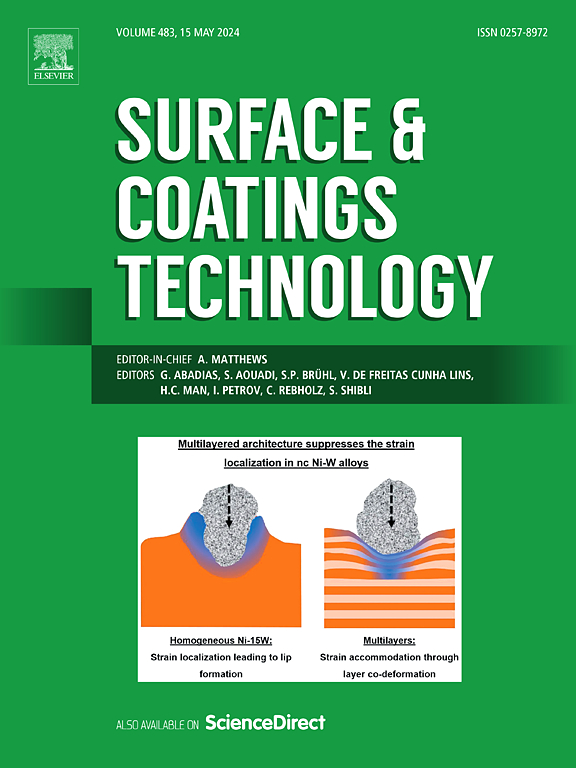Multifunctional Ag/MWCNT/HA coatings on Ti6Al4V alloy via plasma electrolytic oxidation: Enhanced electrochemical and antibacterial properties for dental implants
IF 5.3
2区 材料科学
Q1 MATERIALS SCIENCE, COATINGS & FILMS
引用次数: 0
Abstract
This study investigates an innovative surface modification approach for Ti6Al4V dental implants using plasma electrolytic oxidation (PEO) to create a multifunctional coating incorporating hydroxyapatite (HA), multi-walled carbon nanotubes (MWCNTs), and silver nanoparticles (Ag NPs). The research aims to enhance the implant's mechanical properties, corrosion resistance, and antibacterial efficacy. Various concentrations of Ag NPs were integrated into the coating to optimize performance. Surface characterization techniques, including field-emission scanning electron microscopy (FESEM), X-ray diffraction (XRD) and roughness measurements, were employed to analyze the coating's morphology and composition. Mechanical properties were assessed through nanoindentation tests. Corrosion behavior was evaluated using potentiodynamic polarization (PDP) and electrochemical impedance spectroscopy (EIS) in 0.9 % NaCl environment. The antibacterial activity was tested against Escherichia coli. Results demonstrate that the Ag/MWCNT/HA coating significantly improves surface characteristics, with the optimal Ag NP concentration enhancing corrosion resistance (Rp = 3.25 × 1015 Ω.cm2) and antibacterial performance. This innovative coating system shows promise for improving the longevity and success rate of dental implants.
求助全文
约1分钟内获得全文
求助全文
来源期刊

Surface & Coatings Technology
工程技术-材料科学:膜
CiteScore
10.00
自引率
11.10%
发文量
921
审稿时长
19 days
期刊介绍:
Surface and Coatings Technology is an international archival journal publishing scientific papers on significant developments in surface and interface engineering to modify and improve the surface properties of materials for protection in demanding contact conditions or aggressive environments, or for enhanced functional performance. Contributions range from original scientific articles concerned with fundamental and applied aspects of research or direct applications of metallic, inorganic, organic and composite coatings, to invited reviews of current technology in specific areas. Papers submitted to this journal are expected to be in line with the following aspects in processes, and properties/performance:
A. Processes: Physical and chemical vapour deposition techniques, thermal and plasma spraying, surface modification by directed energy techniques such as ion, electron and laser beams, thermo-chemical treatment, wet chemical and electrochemical processes such as plating, sol-gel coating, anodization, plasma electrolytic oxidation, etc., but excluding painting.
B. Properties/performance: friction performance, wear resistance (e.g., abrasion, erosion, fretting, etc), corrosion and oxidation resistance, thermal protection, diffusion resistance, hydrophilicity/hydrophobicity, and properties relevant to smart materials behaviour and enhanced multifunctional performance for environmental, energy and medical applications, but excluding device aspects.
 求助内容:
求助内容: 应助结果提醒方式:
应助结果提醒方式:


